Those people and animals that eat conventional food have significantly higher glyphosate in urine than those that eat organic food.VIEW THE ENTIRE STUDY DOCUMENT HERE:
Abstract In the present study glyphosate residues were tested in urine and different organs of dairy cows as well as in urine of hares, rabbits and humans using ELISA and Gas Chromatography-Mass Spectroscopy (GC-MS). The correlation coefficients between ELISA and GC-MS were 0.96, 0.87, 0.97and 0.96 for cattle, human, and rabbit urine and organs, respectively. The recovery rate of glyphosate in spiked meat using ELISA was 91%. Glyphosate excretion in German dairy cows was significantly lower than Danish cows. Cows kept in genetically modified free area had significantly lower glyphosate concentrations in urine than conventional husbandry cows. Also glyphosate was detected in different organs of slaughtered cows as intestine, liver, muscles, spleen and kidney. Fattening rabbits showed significantly higher glyphosate residues in urine than hares. Moreover, glyphosate was significantly higher in urine of humans with conventional feeding. Furthermore, chronically ill humans showed significantly higher glyphosate residues in urine than healthy population. The presence of glyphosate residues in both humans and animals could haul the entire population towards numerous health hazards, studying the impact of glyphosate residues on health is warranted and the global regulations for the use of glyphosate may have to be re-evaluated. Discussion Glyphosate-containing herbicides are applied in large amounts to crops 2 to 3 times per season to remove weeds and dry out grain in a process called ‘desiccation’. Once applied, glyphosate accumulates in leaves, grains or fruit. Glyphosate residues cannot be removed by washing and they are not broken down by cooking. Glyphosate residues can remain stable in foods for a year or more, even if the foods are frozen, dried or processed. Recently, many studies have proposed that glyphosate could impact the health of animals and humans. Despite glyphosate’s global dominance as an herbicide, there is little testing of glyphosate residues in animals and humans. Previously, we recorded the presence of glyphosate residues in Danish dairy cows. Glyphosate residues could differ from country to country (in some countries glyphosateis not regulated) and even within a country depending on the quantity, frequency and time of glyphosate application. The present study compared glyphosate residues in urine and different organs of German cows compared with Danish cows using ELISA and GC-MS. Other investigations were carried out to shed light on the presence of glyphosate in hares, rabbits and humans. The ELISA technique for these studies was validated by comparing paired samples with GC-MS. Excreted glyphosate in urine of Danish cows was significantly higher than from German cows and represents a higher intake from feed. Interestingly, the glyphosate concentration in German dairy cows kept in a GM free region excreted much less glyphosate than conventionallymanaged cows. Thus, the prohibition of GM grains and soy prevent these animals from consuming glyphosate with their feed. Since organic farmers don`t live in an isolated area, the presence of low levels of glyphosate could be attributed to contamination by air and rain The presence of glyphosate residues in organs and meat of cattle is not a surprise since cows excretesignificant amounts of glyphosate in urine. An animal study with Sprague-Dawley rats reported that approximately 35-40% of the administered glyphosate dose was absorbed from the gastrointestinal tract so that urine and feces were equally important routes for elimination after one oral application. These authors also found that glyphosate accumulated in bones. Considering the strong chelating stability of glyphosate for calcium, accumulation in bones is not surprising. Our own results showed that glyphosate is detectable in intestine, liver, muscle, spleen and kidney tissue. Hares are among the first animals to enter fields after glyphosate is applied before sowing, in no-till cropping, and with pre harvest desiccation. Surprisingly,the many fold higher glyphosate excretion of domesticated rabbits than of hares (Figure 2) or Danish dairy cows was not anticipated, but probably reflects the high levels of glyphosate in their feed Tedesco et al. evaluated the possible effects of GM soya bean on cell metabolism of rabbits. Although no differences in enzyme levels were detected in serum, a significant increase of lactic dehydrogenase, mainly the LDH1 iso-enzyme, was found especially in the kidney and heart. In the present study, the median glyphosate concentration in urine (around 1 ppb) of people consuming predominantly organic food was significantly lower than in urine of people consuming conventional food. Thus, the prohibition of herbicide use in organic agriculture greatly reduces the intake of glyphosate. Glyphosate in urine of a generally healthy population was significantly lower than in urine from a chronically diseased population. Curwin et al. mentioned that it is important to determine if glyphosate is consumed in conventional foods. Glyphosate in urine of humans (non-suicidal or accidental overdose cases) was measured in different populations. The presence of glyphosate in humans was previously reported by monitoring 48 farmers, their spouses and 79 children (4-18 years) for glyphosate in urine the day before, as well as 1 and 3 days after glyphosate application. They reported detectable levels of glyphosate were found in urine on the day of application in sixty percent of the farmers (geometric mean was 3 ppb, the maximum value was 233 ppb, and the highest estimated systemic dose was 0.004 mg/kg). Farmers who did not use rubber gloves had five times more glyphosate in their urine. Mesnage et al. detected 9.5 ppb glyphosate in urine of a farmer 7h after beginning pesticide handling. Moreover, the excretion of glyphosate in urine is not limited to farmers and glyphosate has been described as a new environmental neurotoxin. Exposure of mammals to glyphosate may cause loss of mitochondrial transmembrane potential and result in oxidative stress to liver and brain. Both apoptosis and autophagy are involved in glyphosate toxicity mechanisms. Case reports indicated that exposure to glyphosate was related to Parkinsonism. Conclusion Glyphosate residue could reach humans and animals through feed and excreted in urine. Presence of glyphosate in urine and its accumulation in animal tissues is alarming even at low concentrations. Unknown impacts of glyphosate on human and animal health warrants further investigations of glyphosate residues in vertebrates and other non-target organisms. Dr. Charles Benbrook is a scientist that testified at the Dewayne Johnson versus Monsanto trial where a school district janitor got cancer using Roundup as part of his job. The jury awarded Mr. Johnson $289M. What Dr. Benbrook said was not allowed to be presented to the jury during the trial is shocking. Watch as Dr. Benbrook explains.Why Controlled Fires are Healing and Protective from Forest Fire
For thousands of years, California Indians used fire as a tool for managing natural resources. Throughout the state, Native peoples conducted cultural burns on a wide range of plants. Their fire regimes created diverse habitat mosaics that sustained meadows, coastal prairies, and grasslands. The careful application of fire increased fruit and seed production, caused new growth that was better suited for making baskets, and reduced the fuel load that could be burned by naturally occurring wildfires. But starting with the Spanish conquest and continuing today in the form of Forest Service and CalFire policies, fire suppression has drastically limited cultural burning. As a result, the forest has become incredibly dense and we are now facing a situation in the Sierra Nevada where drought is causing many trees to die. This massive tree mortality has brought the forest to a tipping point, where large scale wildfires threaten to alter the Sierra forests permanently. In this video, we explore how cultural burning is being practiced today and what lessons it holds for the future of the forest. We visit the area just south of Yosemite National Park where two tribes are working to bring fire back to the land, the North Fork Mono Tribe and the Cold Springs Rancheria of Mono Indians.
How We Can All Help and Bring Communities Together
to Prevent Forest Fires
Click for larger sizes to view.
Click for larger sizes to view.
This article and video tells the story of why the Yurok Tribe have
|
|||||||||||||||||||||
| www.bluemonarchproject.comThe numbers for the Western Migration are extremely low. After raising & releasing over 600 Monarch in 2017, we hope to increase that a lot and help get lots of organic milkweed and nectar plants in the ground or a pot wherever we can. |
WATCH YOUR HUMMINGBIRD FEEDER FOR MOLD! EATING MOLD CAN KILL HUMMINGBIRDS!
ESPECIALLY DURING WARM MONTHS WHEN MOLD CAN MULTIPLY QUICKLY!
The mold can even live in small holes in the plastic so you may have to sanitize the feeder.
| | |
Ingredients found in over the counter hummingbird mixes.
| Ingredients: Sucrose, Sodium Benzoate, (preservative), Tartaric Acid (preservative), and Artificial Food Coloring. USDA-approved red coloring is non-toxic and harmless to hummingbirds. Just because the government approves it, doesn't mean we have to approve those ingredients or the pesticides and GMOs used on sugar crops. IT'S EASY TO MAKE YOU OWN! Trader Joes and Costco have great deals on organic sugar. |
Why Organic Sugar and NO RED DYE is Important
"The most widely used food dye. While this is one of the most-tested food dyes, the key mouse tests were flawed and inconclusive. An FDA review committee acknowledged problems, but said evidence of harm was not "consistent" or "substantial." Red 40 can cause allergy-like reactions. Like other dyes, Red 40 is used mainly in junk foods."
Artificial Red Coloring Found In: Soda pop, candy, gelatin desserts, pastries, pet food, sausage, other products.
About FD&C RED 40: FD&C Red 40 is a synthetic dye produced from petroleum; this dye is FDA-approved for use in food, pharmaceuticals and cosmetics.
This ingredient may be derived from animals. From PETA'sCaring Consumer: Pigments from animal, plant, and synthetic sources used to color foods, cosmetics, and other products. Cochineal is from insects. Widely used FD&C and D&C colors are coaltar (bituminous coal) derivatives that are continously tested on animals due to their carcinogenic properties. Alternatives: grapes, beets, turmeric, saffron, carrots, chlorophyll, annatto, alkanet.
Function(s): Colorant
Synonym(s): RED 40, ALLURA RED AC; CI 16035; D&C RED 40; FD&C RED NO. 40; FOOD RED 17; ALLURA RED; ALLURA RED AC; C. I. 16035; C.I. FOOD RED 17; FD AND C RED NO. 40; FD&C RED NO. 40
As for non organic sugar. You have two kinds. GMO sugar beets that not only make their own poison, but are sprayed with Roundup and other pesticides during growth. Round is now on the California Prop 65 list as "cancer causing." As of 3 months ago, all products sold with glyphosate, an ingredient use in Roundup will have to display a "Cancer Warning."
The other kind of sugar which comes from sugar cane and is responsible for the destruction of all kinds of waterways, especially in Florida where algae blooms form after runoff from non organic sugar cane fields. Not only is various toxic pesticides used during growing, but sugar cane is sprayed with cancer causing Roundup right before harvest to kill and dry out all plants for faster harvest. A process called desiccation. The pesticide can penetrate deep into the plant and leave residues.
There are 100s of chemicals in Roundup more toxic than the glyphosate such as surfactant POEA that is not listed on the label and manufacturer doesn't have to tell. Groups are still trying to fight in court the hiding of these ingredients from customer, and have just recently lost another attempt. Some of my guests have told me even nuclear power waste that they don't want to pay high price to dispose is put in pesticides. That was an editor from an Organic Magazine out of Palm Springs. Can see if you scroll down: Click here.
This desiccation process is also being done to wheat, oats, beans, legumes, rice, and other grains. Causing an epidemic of Celiac Disease. Article here.
If you want to see the mutations caused in all kinds of wildlife from pesticide drift such as that from fast food industry potato crops, including tumors on birds, a ranger's wife documented over 25 years of research with pictures: Click here.
If you worry about too much iron in the sugar, then don't choose conventional or organic turbinado sugar, molasses, or other unprocessed sugars. More on sugar here. Iron is present in all unprocessed sugar because sugar can actually have nutrition.
USDA Organic is also free or very low (pesticide drift can contaminate a small amount) in toxic pesticides which is really just POISON. Some try to make it out that it is only organic sugar that is high in iron, but present in all unprocessed forms. Birds get pesticides from all over, they don't need it in something we have a choice to avoid.
| | |
| | |
Cyrus Sutton Wins Earth Day Film Festival Award for Hawaiian "Island Earth" Documentary.
To transform our food systems into resilient ecosystems that support human health and nurture our environment takes creativity and passion.– Cyrus Sutton, Director
About Island Earth Documentary
To feed all the humans on the planet, we are going to have to grow as much food in the next 35 years as we have grown since the beginning of civilization.
But our conventional agricultural practices are depleting the earth’s natural resources faster than we are replenishing them. Not to mention that the pros and cons of most attempts at modern chemical solutions (pesticides, synthetic fertilizers, GMOs) continue to be heavily debated by scientists, policy makers, industrial heavyweights and community activists.
How are we going to feed the world without destroying the planet we live on?
Island Earth brings this question to life by taking us on the ground to Hawaii, the “ground zero” where all of these issues collide in sharp relief. Less than two centuries ago, native Hawaiians fed their large population through some of the most historically sustainable agricultural practices ever documented. Yet modern-day Hawaii now imports 80-90% of their food supply from elsewhere in the world, due to a complex web of public policy and private interests. Within two generations, the Hawaiians have become canaries in the coal mine for food issues that are affecting the entire planet.
This film captures our moment in time, where two separate paths are being forged at once: one that builds upon the past in the name of progress, and the other that rejects the past in the name of progress. It bears witness to the choices that we are making today that will affect our future no matter what.
CAST & CREW
Island Earth follows Malia Chun, Cliff Kapono, and Dustin Barca – three Hawaiians seeking to make Hawaii a beacon of hope for an uncertain future.
Cliff Kapono
Cliff is a Kamehameha School graduate with a Masters in Biotechnology who is finishing his PhD in Chemistry at UCSD. Hailing from Hilo, Cliff sets out to be a positive force in local Hawaiian agri-business but discovers that there is more to the issue than meets the eye.
Dustin Barca
Dustin is a former professional world tour surfer and professional MMA fighter living in Kauai. Unimpressed by his local government employees and their ties with GMO corporations, Dustin chose to take action by running for mayor.
Malia Chun
Malia is a Hawaiian cultural practitioner and educator living in Kauai. She joined the anti-GMO movement after the sugarcane fields opposite her house were replaced by GMO crops heavily saturated with pesticides, causing her family to become sick.
Cyrus Sutton (Director)
Cyrus Sutton is an Emmy-winning filmmaker based near Portland, Oregon. At 23 Cyrus won an Emmy for his writing and cinematography on Next Wave: A Tsunami Relief Story for Fox Fuel TV.
Today he serves as director of media at Guayaki Yerba Mate and continues to pursue his documentary filmmaking career.
What are some easy next steps we can take to get involved? For me it’s been a process of learning about organizations in my local area that are committed to providing for the basic needs of my community in ways that are beneficial to the land and our health. Permaculture and regenerative agriculture organizations have really inspired me by their creative solutions based ways of thought.
FILMMAKER STATEMENT
Growing up amongst Southern California’s endless strip malls, trips to Hawaii symbolized what the world could be—lush, fragrant and vital. Beyond the beautiful surf was a culture that taught me a different definition of wealth, where clean water and verdant landscapes held everything that we needed to thrive. A few years ago, I heard that this paradise was being poisoned by chemical companies testing their GMO crops. Shocked by the lack of the media coverage and the misleading information, I decided to do something.
In the past three years, I’ve been working on a film, Island Earth, that seeks to tell this story. I’ve had the opportunity to talk with some of America’s leading scientists, doctors, and journalists to learn firsthand about the complex systems that produce our food. A study published by Cornell University in 2006 reveals that our current farming practicesare accelerating the erosion of 37,000 square miles of farmland each year. Without fungal and plant root webs, soil becomes structureless dirt that can be easily swept away by wind and rain.
Although GMOs have been touted by many as an answer to feeding the world, the vast majority of GMOs today are used to sell more herbicides. As UC Berkeley professor Tyrone Hayes asserts, 90% of the world’s seeds are owned by a handful of the world’s largest chemical companies. In fact, a recent New York Times article shows that the use of herbicides has risen a whopping 21% since the introduction of GMO herbicide resistant seeds twenty years ago. This is the heart of the GMO issue: I believe it’s not necessarily the technology itself, but the way the technology is being used.
To transform our food systems into resilient ecosystems that support human health and nurture our environment takes creativity and passion. I’ve partnered with my good friends at The Ecology Center, a leading ecological education center, to put together a manual to inspire each one of us to dig our hands into the soil and become part of the solution. Growing food, celebrating with loved ones, and supporting local organic agriculture is our path forward. Today, we offer a simple and practical guide to co-creating a better world. Dig in.
Dr. Stephanie Seneff has information for people that want to have a healthy child and how to prepare and watch out for before, during, after pregnancy. Also Roundup Glyphosate impact on Climate Change and our health, as well as how Zika Virus - Microcephaly link a lie. There is a link between Anencephaly (cousin to microcephaly) which is babies being born with no brain, and Glyphosate. This is some of the most important info we have covered.
Monsanto Long Term Studies Buried by EPA Revealed! Dr. Stephanie Seneff Explains
Dr. Stephanie Seneff Explains How Glyphosate Ends Up in Our Proteins
Dr. Seneff: 80% Autism Rates Possible as Scary Side Effect of Roundup Chemicals
PLEASE SUBSCRIBE TO OUR YOUTUBE CHANNEL
Read the journal article by Stephanie Seneff and Anthony Samsel
EPA has been ordered to take down information about the hazards of Chlorpyrifos, a highly toxic pesticide that causes birth defects in our children, robs them of a higher IQ, and causes slow development and autism. People are easier to control if you destroy their brain development and less likely to rebel. Read about information previously posted on the EPA website that was asking for comments. Everything was in place to phase out it's use until it was reversed by Trump.
This pesticide is used extensively on golf courses. Something Trump has a vested interested in since owns 12 in the USA and 5 other in other countries like Scotland where he owns too. Trump had to build his golf course on a 4,000 year old preserve that people begged him not to do.
Mother Jones Reports
Trump's EPA Just Greenlighted a Pesticide
Known to Damage Kids' Brains. Read the article.
At least 3,000 geese were killed by a toxic stew formed by a former copper mine in Butte, Montana, last fall, raising questions about how the new Trump administration will handle the largest Superfund site in the country. Read the whole story.
This Proposed Rule document was issued by the Environmental Protection Agency (EPA)
For related information, Open Docket Folder
ActionProposed rule.
SummaryEPA is announcing and inviting comment on additional information obtained and developed by EPA in conjunction with the proposed tolerance revocation for chlorpyrifos. This information includes the revised human health risk assessment and the drinking water assessment. It also includes EPA's issue paper and supporting analyses presented to the Federal Insecticide, Fungicide and Rodenticide Act (FIFRA) Scientific Advisory Panel's (SAP) meeting in April 2016 that addressed chlorpyrifos biomonitoring data and adverse neurodevelopmental outcomes, public comments received during the meeting, the FIFRA SAP's meeting minutes and the FIFRA SAP report. EPA is specifically soliciting comments on the validity and propriety of the use of all the new information, data, and analyses. EPA is accepting comment on the information and analysis, as well as reopening comment on any other aspect of the proposal or the underlying support documents that were previously available for comment. The EPA continues to seek comment on possible mitigation strategies, namely, use deletions, which might allow the EPA to retain a small subset of existing chlorpyrifos food uses. Commenters need not resubmit comments previously submitted. EPA will consider those comments, as well as comments in response to this notice, in taking a final action.
DatesSubmit comments on or before January 17, 2017.
AddressesSubmit your comments, identified by docket identification (ID) number EPA-HQ-OPP-2015-0653, by one of the following methods:
- Federal eRulemaking Portal: http://www.regulations.gov. Follow the online instructions for submitting comments. Do not submit electronically any information you consider to be Confidential Business Information (CBI) or other information whose disclosure is restricted by statute.
- Mail: OPP Docket, Environmental Protection Agency Docket Center (EPA/DC), (28221T), 1200 Pennsylvania Ave. NW., Washington, DC 20460-0001.
- Hand Delivery: To make special arrangements for hand delivery or delivery of boxed information, please follow the instructions at http://www.epa.gov/dockets/contacts.html.
For Further Information ContactDana Friedman, Pesticide Re-Evaluation Division (7508P), Office of Pesticide Programs, Environmental Protection Agency, 1200 Pennsylvania Ave. NW., Washington, DC 20460-0001; telephone number: (703) 347-8827; email address: [email protected].
Supplementary InformationI. How should I submit Confidential Business Information (CBI) to the Agency?Do not submit this information to EPA electronically. Clearly mark the part or all of the information that you claim to be CBI. For CBI information in a disk or CD-ROM that you mail to EPA, mark the outside of the disk or CD-ROM as CBI and then identify electronically within the disk or CD-ROM the specific information that is claimed as CBI. In addition to one complete version of the comment that includes information claimed as CBI, a copy of the comment that does not contain the information claimed as CBI must be submitted for inclusion in the public docket. Information so marked will not be disclosed except in accordance with procedures set forth in 40 CFR part 2.
II. Purpose of This DocumentEPA is reopening the comment period on the proposed rule: Entitled “Chlorpyrifos; Tolerance Revocations” (80 FR 69080, November 6, 2015) (FRL-9935-92), herein referred to as the “proposed rule,” for the purpose of obtaining public comment on the additional information and analyses announced in this document and which may be relevant to the development of a final action. EPA is also accepting comment on any other aspect of the proposal or the underlying support documents that were previously available for comment. As explained in the proposed rule, the timing of EPA's issuance of the proposal was dictated by an August 10, 2015 order by the U.S. Court of Appeals for the Ninth Circuit in Pesticide Action Network North America (PANNA) v. EPA, No. 14-72794. The PANNA decision directed EPA to respond by October 31, 2015 to PANNA and the Natural Resource Defense Council's (NRDC) petition to revoke all chlorpyrifos tolerances and cancel all chlorpyrifos registrations. As a result of that timing, EPA had not yet completed portions of its scientific assessment when it issued the proposed rule. Specifically, EPA noted that it issued the proposed rule in advance of completing a refined drinking water assessment and without conducting additional analysis of the hazard from chlorpyrifos in response to comments received on EPA's December 2014 Revised Human Health Risk Assessment. Accordingly, EPA noted in the proposed rule that it would update the proposal with any new or modified analyses, as EPA completed additional work after the proposal and, to the extent practicable, EPA would provide the public an opportunity to comment on that work prior to issuing a final rule. Consistent with that commitment, EPA is today seeking comment on the following documents that were not available for public comment during the prior comment period on the proposed rule: Chlorpyrifos: Revised Human Health Risk Assessment for Registration Review (2016); the materials and final report from the 2016 Chlorpyrifos SAP; and Chlorpyrifos Registration Review Drinking Water Assessment.
EPA's revised analyses do not result in a change to the EPA's proposal to revoke all tolerances but it does modify the methods and risk assessment used to support that finding in accordance with the advice of the SAP. The revised analysis indicates that expected residues of chlorpyrifos on most individual food crops exceed the “reasonable certainty of no harm” safety standard under the Federal Food, Drug, and Cosmetic Act (FFDCA). In addition, the majority of estimated drinking water exposures from currently registered uses, including water exposures from non-food uses, continue to exceed safe levels even taking into account more refined drinking water exposures. Accordingly, based on current labeled uses, the agency's analysis provided in this notice continues to indicate that the risk from the potential aggregate exposure does not meet the FFDCA safety standard. EPA can only retain chlorpyrifos tolerances if it is able to conclude that such tolerances are safe. EPA has not identified a set of currently registered uses that meets the FFDCA safety standard because it is likely only a limited number of food uses alone, and in combination with predicted drinking water exposures, would meet the standard. Further, EPA has not received any proposals for mitigation that registrants may be willing to undertake that would allow the EPA to retain any of the tolerances subject to this rulemaking. EPA continues to seek comment on possible mitigation strategies, namely, use deletions, which might allow the EPA to retain a small subset of existing chlorpyrifos food uses.
EPA consulted the FIFRA SAP for scientific advice on its analysis of biomonitoring data at a meeting on April 19-21, 2016, at which time, the public also had an opportunity to provide comment. The FIFRA SAP was asked to address the use of the epidemiological study The Mothers and Newborn Study of North Manhattan and South Bronx performed by the Columbia Children's Center for Environmental Health (CCCEH) at Columbia University to establish a new toxicological endpoint and associated point of departure for chlorpyrifos based on observed adverse neurodevelopmental outcomes in children resulting from prenatal exposure to chlorpyrifos. While the residential uses that resulted in chlorpyrifos exposures in the CCCEH study were cancelled in 2000, EPA believes this study remains relevant in evaluating risks from exposure to currently registered uses. In its presentation to the SAP, EPA proposed to use biomonitoring data (cord blood concentrations) identified in the CCCEH study (Rauh et al., 2006 and Rauh et al., 2011) as the basis for its point of departure. The FIFRA SAP provided feedback indicating that it did not believe using the cord blood data from that study was appropriate to establish a new point of departure. The SAP's primary criticism was that there was not enough data on the relationship between cord blood concentrations at birth to exposures at and around the time of chlorpyrifos application to support its use in quantitative risk assessment. Further, the FIFRA SAP noted that EPA's assessment did not identify a particular window of exposure within the prenatal period linked to the effects reported. Generally, however, the FIFRA SAP agreed with the overall conclusion of the CCCEH study, i.e. the association between prenatal chlorpyrifos exposure and neurodevelopmental outcomes in children.
The final FIFRA SAP report provides a detailed account of the uncertainties associated with the agency's April 2016 proposed approach to selecting the point of departure and its use in quantitative risk assessment. It also outlines the SAP's concern that “epidemiology and toxicology studies suggest there is evidence for adverse health outcomes associated with chlorpyrifos exposures below levels that result in 10% red blood cell (RBC) acetylcholinesterase (AChE) inhibition” (FIFRA SAP, 2016, p. 18). The FIFRA SAP recommended that EPA should derive the point of departure for neurodevelopmental effects using the “estimated peak blood concentration or time weighted average blood concentration within the prenatal period” (FIFRA SAP, 2016, p. 42).
After careful consideration of public comments and the SAP's recommendations, EPA has concluded the most appropriate path for reconciling the SAP's concerns is to follow through on the SAP's recommendation to use a time weighted average approach. The agency agrees with the 2016 FIFRA SAP (and previous SAPs) that there is a potential for neurodevelopmental effects associated with chlorpyrifos exposure to occur at levels below 10% RBC AChE inhibition, and that EPA's existing point of departure (which is based on 10% AChE inhibition), is therefore not sufficiently health protective.
As detailed in Chlorpyrifos: Revised Human Health Risk Assessment for Registration Review (2016), in order to follow up on the SAP's recommendation that the point of departure should be based on blood concentrations at the time of exposure to chlorpyrifos (rather than based on cord blood at the time of delivery), EPA evaluated the most likely chlorpyrifos application method to determine peak exposures to the CCCEH study cohort experiencing neurodevelopmental effects in children. EPA contacted the technical pest advisor responsible for overseeing New York City's housing authority in order to confirm the application method used at the time the CCCEH study was conducted. Based on those conversations and a review of the registered uses available during that period, EPA concluded that crack and crevice treatments were the most likely exposure pattern among those use patterns registered at the time of the study and therefore has used these exposures as the basis for a new point of departure.
EPA generally selects the dose at which no toxicological effects are demonstrated to ensure our regulatory endpoint reflects a level of exposure that does not present a risk concern. However, the CCCEH study only supported the determination of a lowest observed adverse effects level (LOAEL). In situations where the agency selects a POD from a study where a no observed adverse effects level (NOAEL) has not been identified, EPA generally will retain the Food Quality Protection Act (FQPA) safety factor of 10X to account for the uncertainty in using a LOAEL. The 2016 revised risk assessment retains this uncertainty factor for chlorpyrifos and also applies a 10X uncertainty factor for intraspecies variability because of the lack of sufficient information to reduce or remove this factor.
The external exposure was calculated based on the assumptions and methods outlined in the EPA's 2012 Standard Operating Procedures (SOPs) for Residential Pesticide Exposure Assessment and chemical-specific exposure data, where available. Specifically, the 2012 Residential SOPs, which were peer reviewed by the FIFRA SAP in October 2009, were used to predict the potential exposures which could have occurred to individuals in the cohort for the indoor crack and crevice pesticide use pattern.
EPA then used the chlorpyrifos physiologically based pharmacokinetic (PBPK) model to estimate the study cohort mothers' systemic dose related to the LOAEL by (1) determining time-weighted average (TWA) blood levels from women exposed to chlorpyrifos from indoor exposures to the cancelled crack and crevice use and (2) using the crack and crevice TWA blood level as the internal dose for determining points of departure for infants, children, and adults exposed to chlorpyrifos using current exposure potential. The use of the PBPK model to assess internal dosimetry from various exposure scenarios continues to be supported by the SAP. This applies to the crack and crevice scenario identified as the most likely exposure pattern in the CCCEH study, where women were potential exposed via the dermal, oral, and inhalation routes. The detailed rationale is presented in Chlorpyrifos: Revised Human Health Risk Assessment for Registration Review (2016).
EPA has also completed, and is making available for public comment, Chlorpyrifos Registration Review Drinking Water Assessment. EPA conducted a national screening level drinking water assessment in 2014. Because of the court decision ordering EPA to respond to the PANNA-NRDC Petition by October 31, 2015, EPA was not able to complete a more refined drinking water assessment for chlorpyrifos in advance of the proposed rule. Since that time EPA conducted the refined drinking water assessment with the intention of providing a basis for supporting a more tailored approach to risk mitigation. In the proposal, EPA proposed revoking all tolerances largely because the agency could not make a safety finding based on drinking water exposure in highly-vulnerable watersheds. EPA reasoned if it could better identify where such vulnerable areas might be, it could be possible for registrants to amend product labeling in ways that might make unnecessary some number of the proposed tolerance revocations.
Chlorpyrifos Registration Review Drinking Water Assessment serves to combine, update and complete the work presented in the 2011 and 2014 drinking water assessments for chlorpyrifos as part of the registration review process. This document specifically focuses on the exposure estimates for surface water. The 2014 assessment presented an approach for deriving more regionally-specific estimated drinking water exposure concentrations for chlorpyrifos and chlorpyrifos-oxon for two water resource regions, hydrologic unit code (HUC)-02. This assessment updates those exposure assessments and provides estimates for the remaining (i.e., 19) HUC-02 regions. Urban uses, which had not previously been assessed, are included in this update. This assessment also includes statistical analysis of all available monitoring data for chlorpyrifos and chlorpyrifos-oxon. While this drinking water assessment is more refined than the previous assessments, as a general matter, the results did not allow for identification of many areas where potential exposures of concern to drinking water can be ruled out. As a result, this assessment does not significantly alter the conclusions in the proposed rule regarding drinking water exposure and continues to indicate potential exposure to chlorpyrifos or chlorpyrifos-oxon in finished drinking water across the country based on currently labeled uses. This is supported by both model estimated concentrations as well as measured chlorpyrifos concentrations in surface water across the United States.
Section IV of this Notice of Data Availability (NODA) describes all additional data and analyses and how they impact the EPA's proposal. Note, however, that this NODA does not provide an exhaustive presentation of the additional data and analysis that EPA is placing in the associated docket and seeking comment on. All the information subject to this notice can be accessed as described in section III of this notice.
EPA is providing notice on these additional analyses to provide an opportunity for the public to submit additional data or information for the agency's consideration as it develops the final rule. Since EPA is still in the process of deliberating the provisions of a final rule, EPA cannot definitively state whether this information will provide support for any provision of the final rule, or that the agency has determined that it is appropriate to rely on this information in developing the final rule.
On December 10, 2015, the Ninth Circuit issued a further order requiring EPA to complete any final rule and fully respond to the PANNA and NRDC petition by December 30, 2016. On June 30, 2016, EPA sought a 6-month extension to that deadline in light of the SAP's recommendation at the meeting and in order to allow EPA to fully consider the SAP's written report. The FIFRA SAP report was finalized and made available for EPA consideration on July 20, 2016. The court rejected EPA's request for a 6-month extension and ordered EPA to complete its final action by March 31, 2017 (an extension of 3 months). The court also announced that no further extensions to that date would be granted.
III. Where can the information identified in this document be found?The information that EPA is be made available for public review and comment can be found in the following dockets: EPA-HQ-OPP-2015-0653, the docket for the proposed tolerance revocations, and EPA-HQ-OPP-2016-0062, the FIFRA SAP docket, which contains the Chlorpyrifos Issue Paper and supporting materials. Both dockets can be accessed through http://www.regulations.gov. As noted, EPA is also reopening the comment period to allow for comment on any aspect of the proposed revocation published on November 6, 2015 (80 FR 69080) (FRL-9935-92).
IV. What analysis and data are being noticed?1. EPA is seeking comment on the following updates to the chlorpyrifos human health risk assessment: (1) Use of the crack and crevice scenario to derive an exposure level for women in the Columbia study; (2) using the LOAEL from the Columbia study and PBPK modeling to derive an endpoint for use in quantitative risk assessment; (3) use of the 10X uncertainty factor for intraspecies variability; (4) use of the 10X FQPA safety factor for LOAEL to NOAEL extrapolation (please include your rationale for any alternative values suggested for this factor). Its analysis is included in the Chlorpyrifos: Revised Human Health Risk Assessment for Registration Review (2016), which is available in the chlorpyrifos tolerance revocation docket (EPA-HQ-OPP-2015-0653).
2. EPA is also making available for comment the issue paper and associated materials presented to the April 2016 FIFRA SAP and the final report of the SAP. The FIFRA SAP materials and final report are available in the FIFRA SAP docket (EPA-HQ-OPP-2016-0062).
3. EPA is also seeking comment on Chlorpyrifos Registration Review Drinking Water Assessment, a highly refined drinking water assessment that updates and completes the agency's examination of exposure through drinking water for all registered uses of chlorpyrifos. This assessment integrates regionally specific (i.e., spatially relevant) estimated drinking water concentrations and an extensive evaluation of available surface water monitoring data for chlorpyrifos and chlorpyrifos-oxon. The assessment considers both agricultural and non-agricultural uses of chlorpyrifos, a sensitivity analysis for model estimated concentrations, and statistical evaluation of surface water monitoring data.
List of Subjects in 40 CFR Part 180Environmental protection, Administrative practice and procedure, Agricultural commodities, Pesticides and pests, Reporting and recordkeeping requirements.
Dated: November 10, 2016.
Richard P. Keigwin, Jr.,
Acting Director, Office of Pesticide Programs.
[FR Doc. 2016-27552 Filed 11-16-16; 8:45 am]
BILLING CODE 6560-50-P
Add to that the extra stress that comes during the winter months, December 26th falling on a Monday, the day of the week when most heart attacks happen, heart attacks are the #1 killer with someone dying every 36 seconds according to the American Health Association, it might be worth it to take precautions. Smart Health Talk has not only outlined those for you here, but has an easy to review webpage with symptoms for both men and women which are different. It is important to know the symptoms, not ignore them, take action immediately especially if you are alone and having a heart attack.
Most important is to call 911 and have the symptoms checked out no matter how much it seems like an inconvenience as that could be a deciding factor whether you live or die. Ask yourself if you can list the symptoms of our #1 KILLER heart disease!
If you would like to know how to reduce your risk of a heart attack and stroke by 50% read on!
Eating can be one of the reasons to explain why deaths are so high on these holidays. Not only are people eating more of the high fat and salty foods in a shorter period of time than usual, but they have traveled to be with their families and friends, or are hosting a party and when they start to feel bad they don’t want to complain and ruin everyones fun so they dismiss their symptoms.
Many don’t even know the symptoms of a heart attack. They ARE DIFFERENT for men and women so use the Smart Health Talk website has an easy to reference webpage under their “Resources” tab that can make it easy to find and understand what they are so you can be aware. The most important action is to NOT IGNORE symptoms or worry about inconveniencing the group and call 911 and get checked out.
How would you like to reduce you risk of a heart attack or stroke by 50% not only on these high risk days, but everyday?
Other important tips from Smart Health Talk Host Elaine McFadden, MPH, RD:
- Stay away from tobacco smoke.
- Know if you have high blood pressure and take steps to reduce it. Start with diet and exercise. Even walking for 15-30 mins a day can reduce you risk of a stroke and heart attack.
- Eat lots of organic fruits and vegetables that are high in the nutrients that make you veins and arteries more elastic, can repair damage, clean out buildup of plague, provide fiber to remove unneeded fats and control blood pressure because diabetes also increases your risk of a heart attack, and provide anti inflammatory protection.
- Make as much of your diet organic as possible by only buying in season and shopping local farmers markets. People pay more for organic because the farmer makes the least amount of money. Who is tagging on extra costs? The retail market. When you buy farmer direct you cut out costs involved in bringing a product to retail that can include broker and distributor fees as well as retail markup.
Websites like EatLocalGrown.com or LocalHarvest make it easy to find local farmers markets and farms.
- Choose wild salmon over farmed salmon. Type in “Smart Health Talk” and “salmon” to find our webpage full of information why we recommend to NEVER BUY FARMED SALMON. Why do we stress this besides farmed salmon is gross, full of dioxins, parasites, viruses, and bacteria and are responsible for wild salmon and environmental death? Our recent conversation with a researcher working on the Loma Linda Health Study shared with me their latest finding are showing pesco vegetarians live the longest healthiest lives.
- Just pigging out on conventional meat, high in saturated fat increases the amount of fat circulating in your blood and increasing your risk for a heart attack.
- If you are having any refined carbs, which includes beverages like juice (conventional is concentrated with pesticides) where the fiber has been removed, processed grains/flours, chips, sugar, sodas and such, make sure you also have a high fiber source such as chia seeds or other fiber containing foods products at the same time. By making you blood sugar rise and spike quickly over and over you are literally teaching your body to be a diabetic.
Here's an example:
If your going to eat eggs, bacon, and juice, consider mixing a couple of teaspoons of chia seeds in water and drinking first to hold back the blood sugar spike since juice is high carb, and eggs and bacon have no fiber to counteract the sugar spite that comes with the carbs.
- Go for a walk before or after you eat. Take a tip from our interview with Sustainable Santa. He recommends parents trade exercise minutes for TV minutes. Think it would be a good idea for adults to listen to Santa on this one.
How would you like to reduce your risk of a heart attack or stroke by 50% not only on these high risk days, but everyday? Do this:
- DRINK WATER and try and avoid alcohol and other dehydrating drinks such as energy drinks or those containing lots of caffeine. Eating lots of high saturated/trans fat and salty conventional foods can be a death blow on their own, but dehydration on top of it can increase the risk of a lethal situation. Try to avoid hormone disrupting BPA containing water bottles (in plastic and some brands of reusable bottles), and make water easily accessible at parties and get togethers.
Dr. Chan warns that, “Not drinking enough water can be as harmful to your heart as smoking!”
- The thickness of whole blood
- The thickness of the clear component of blood
- The percentage of blood composed of red blood cells
- The level of the proteins in the blood, which are essential for the blood clotting process.
You want to include water throughout the day....it might save your life!
Choose organic choices including organic grassfed meat and dairy and Alaskan seafood and salmon. NEVER farmed salmon for the most protection.
Same works for beef. Go for organic grassfed. If not certified organic and just grassfed, make sure the farmer is not using Roundup or other pesticides on their farm. Grassfed is more lean so meat requires cooking methods that won’t dry it out. That marbling in non organic “corn fed” steaks is saturated fat and full of pesticides because that is where it is stored since the body can’t deal with it and if left circulating in the blood it will destroy or mutate every cell it touches.
Why we can only recommend organic food and strongly advise consumers to avoid foods that are GMO, processed, and treated with pesticides including Roundup glyphosate.
Most non organic grains are sprayed with Roundup right before harvesting so people are getting pesticides from seed to harvest. The purpose of spraying non GMO crops with glyphosate right before harvest has to do with money and making more of it. Farmers want all of their plants finished at the same time, but that does not happen in real life so they spray fields with Roundup right before harvest, they all die and dry out so they are easier to harvest. This also allows farmers to squeeze three cycles of growth into a year instead of two.
A dead dry grain crop is easier to harvest than a green alive one. Grains die because they are NOT GMO Frankenstein crops. Those crops don’t die when you spray them with Roundup which is freaky.
More research than ever is disproving the claim by GMO seed makers that their seeds are “equivalent” to real seeds, and researchers are finding hundreds of discrepancies that include the accumulation of “toxins” in GMO seeds/plants. THIS IS NOT EQUIVALENT TO REAL NON GMO SEEDS SO DON’T BE FOOLED! Go here to see the report.
New GMO crops like the GMO “Arctic Apple” that has the “browning switch” turned off, also turned off the antioxidant pathway so not made any more, not in the food, and again consumers are robbed of the very thing that will prevent a heart attack.
So Roundup interferes with this pathway, but also binds with minerals in the soil so not accessible to them to live and how Roundup kills weeds, starving them to death. The GMO plant lives because of it’s zombie traits that makers bread into the seed. Basic math tells us that without these key minerals in the soil, there is not in the soil for the food produced on the GMO plant.
Not hard to understand if you go back to Roundup’s glyphosate’s beginnings and the first patent filed for its use, cleaning metal accumulation in pipes by binding or chelating to them and then facilitating removal. Later glyphosate was also patented as an antibiotic.
Our grains are so deficient in key nutrients like folic acid, breads and other foods have to be “enriched” with a synthetic form of the nutrient to prevent an epidemic of spina bifida birth defects.
The power of glyphosate is far reaching as has been revealed in our interviews with Dr. Stephanie Seneff, a researcher from MIT who has been working with now retired, long time chemist and think tank participant Dr. Anthony Samuel. Type Dr. Seneffs name and Smart Health Talk to find our interviews with her on YouTube as well as interviews with Dr. Michael Hansen, Dr. Jonathan Lundgren, Dr. Gilles-Eric Séralini, Dr. Tyrone Hayes, Dr. Vandana Shiva, and Dr. V. A. Shiva Ayyadurai.
HOW YOUR BEING RIPPED OFF AT THE GROCERY STORE WITH A LIE!
HOW TO PREPARE FOR THE NEXT BIG FIGHT THAT IS COMING! OUR ORGANIC PROGRAM IS BEING TAKEN OVER BY BIG CHEMICAL AGAIN! LET'S STOP IT!
MARK YOUR CALENDARS!
One farmer called organic hydroponics "Zombie Plants on Life Support." If people want to grow hydroponic/aquaponic that is their right, but it is illegal and goes against everything the USDA Certified Organic soil based program was set up to do.
Certifiers CCOF & QAI are biggest offenders and are allowing hydroponic farmers to call themselves something they aren't and suck off all of the work of our organic farming forefathers that put 18 years of their lives to make happen. The goal of USDA Certified Organic was to separate themselves from chemical farming and give consumers a more nutrition packed/tasty food free of chemical/pesticides.
This illegal action takes us right down that chemical farming road again and floods the market with cheap products, lacking nutrition/taste, and sets a goal to put organic farmers out of business. Hydroponic growers know "organic" is premium and their product is not. They need to stop selling produce that is not labeled hydroponic and is tricking and lying to the customer that it was grown in soil.
Dave Chapman who helped on the organic certification program and is on the task force that sent recommendations to the National Organic Standards Board (NOSB) that decides what is allowed or not in the organic program NOT THE USDA, said even a Whole Foods produce manager didn't have a clue he was selling organic hydroponic produce.
If we don't stop it, and US allows the organic program to be compromised, it can change organic food policies globally and US market will be flooded with cheap "organic hydroponic" from other countries that would love to do that, put organic soil farmers out of business, and the process of sequestering carbon into the soil which organic does better than anything else so reverse climate change will stop. Conventional farming dumps carbon in large amounts into the air.
I saw this article below on how Monsanto is encouraging their farmers to broadcast live on facebook. Organic farmers need to duplicate this practice to help us educate others on just what organic farming is all about and let others hear their motivations and learn about our "Mothers Soil", what it should be, and what it can give to us which is mainly LIFE AND NOT DISEASE!
PLEASE WATCH THIS VIDEO WITH DAVE CHAPMAN WHO HELPED START THE CERTIFIED ORGANIC MOVEMENT AND THEN WATCH LINK IN DESCRIPTION FOR RALLY IN THE VALLEY! See both videos from the event below.
Our organic farmers, especially those that were there when the whole organic certification program was formed are some of our most wisest of all. We need to learn from them.
The next NOSB should be everyone's next target since the issue of "organic hydroponics" will be decided. Let's give it the funeral it deserves and NOT TAKE ANYTHING FOR GRANTED. DON'T BE FOOLED, THIS IS BIG MONEY and they want to win. Scotts who just got approval for GMO grass is investing big time in hydroponics and so is Monsanto. Their new way of taking over our food system!
Event Date:
Wednesday, April 19, 2017 - 8:30am to Friday, April 21, 2017 - 6:00pm
NOSB Spring 2017 Meeting - Denver, CO
The National Organic Standards Board (NOSB) typically meets twice per year in various locations around the United States. During meetings, the NOSB listens to public comments, discusses agenda items, and then votes in a public forum. Detailed meeting information including agendas, locations, recommendations, and public comments will be posted below as it becomes available. For information on previous meetings, visit the NOSB meetings page.
We need letters, people and media coverage on a national level like Standing Rock for the April event/NOSB meeting.
In Public Health they taught me to duplicate what big corporate does since they have all the big bucks for research and to figure out what works. This posting of videos by farmers on facebook must be working for them so the organic industry can to do that too.
Monsanto is telling their farmers to post videos on Facebook. It must be effective or they would not suggest it. We want people to get to know our organic farmers so we are going to be encouraging our creme of the crop organic farmers to also be posting videos on Facebook.
Here is the Monsanto link:
http://www.prdaily.com/marketing/Articles/21909.aspx
Find out the truth or Organic Hydroponics! Only happening because organic certifying agents are being paid off by big corporate to take over the multi billion dollar organic program with cheap hydroponic production and steal it away from true organic farmers. It is these certifiers and not the USDA that started this practice.
Get to know our true organic farmers. They help us reverse climate change and give us the most nutritious, best tasting food!
Watch this video and see the whole event. Some great farmers voice their opinions toward the end of the video. Well worth the time!
Dr. Jonathan Foley explains why agriculture is everything to the future of our planet, why there is NO MORE land to take for growing food. Regenerative agriculture is the only answer to having enough healthy food globally. The cost, quality and availability of food is all impacted.
How organic, regnerative agriculture REVERSES CLIMATE CHANGE!
CHOOSE FOODS IN SEASON OR GROW YOUR OWN! SUPPORT LOCAL FARMERS: EATLOCALGROWN.COM | AVOID PESTICIDES BY:EASY 2 MIN GARDENING TIPS TO HELP BEGINNERS & EXPERIENCED GROWERSJoin us on YouTube. Please subscribe! |
Pesticides are being sprayed in our neighborhoods. What should we do? We recommend to take action to stop it. When did you give permission for a government office to saturate your home and bodies with toxins that are know carcinogens?
After talking to these experts, there is no way I can support saturating our neighborhoods and exposing families and their homes to toxins as viable action to "protect the public from West Nile Virus." Being a Registered Dietitian with a Masters Degree in Public Health, these issues are directly related to health and disease risk, in other words what I'm all about, saving lives through smart lifestyle choices and safe environmental exposure.
Once most people get all the facts, it is easy to see why our families and neighborhoods need to be protected from these toxins forced on us by government agencies. We feel people need more information to protect our neighborhoods using public health measures instead of just going to a pesticide that has no proof it is effective in these situations and instead can be exposing us to something that also increase our risk for disease and illness.
There is one group that is also involved in a current lawsuit that claims spraying pesticides in our neighborhoods is like coming on to our property without a warrant or our permission and exposing our families and every other living thing to some of the most toxic pesticides available. In other words: trespassing on our land.
There is no doubt that pesticides are the #1 cause of birth defects, and stated by the Senior Scientist at Consumers Union, Dr. Michael Hansen, who claims to have read more research than anyone in the country on pesticides, and has been a guest on our Smart Health Talk Radio Show multiple times. The amount of pesticide that can fit on a pinhead will mutate, destroy, and kill cells in our body as that is what they are designed to do... kill.
To spray our neighborhoods forces everyone to be exposed not just during spraying, but after as well, as everything in our yards is coated, even our food for those growing a garden. Pets are also at high risk.
Pesticides have a dose to weight response and that's why children/pets are very susceptible to the damage they can cause. The short term research done by pesticide makers (gov't does NO research but depends on what makers claim in order to make decisions on safety and are usually only done for 3 month period) uses a model of an adult male. There is no testing for children or women.
These pesticides are killing predators that protect us 24-7 even though pesticides are like a long shot crap shoot. Like using gun to kill a fly that landed on your foot. The chances of actually killing a mosquito that has West Nile Virus is remote where frogs, fish, dragon flies, skimmers, bats, and other "good guys" that eat larvae everyday are wiped out when the pesticide is sprayed in the area. We have had a guest that has witnessed this first hand and watched each die off, with the frogs going first so all that is left is black flies that attack people and animals. Bees are active first thing in the morning so it is very likely that they will be killed since the residue sitting on leaves and flowers is still an active poison. Birds can also be susceptible to pesticide toxicity.
Even the Vector Department will admit that the true first line of defense is in fact eliminating the places where mosquitoes breed, such as standing water that collects in empty pools that could be at a house that is vacant, buckets or any kind of container that is sitting outside especially after a rain. Tires are another breeding ground.
We hear no educational information from the County Vector Departments on these preventative measures. Why with so many more choices, and a greater understanding of the health and environmental risks, why is there no plan in place to stop exposing the public, and instead move to a safer system that involves alternatives and public education on how to eliminate breeding grounds. There are a multitude of safer organic pesticides also now available that are screened before classified as organic by the OMNI group.
One non toxic example where you bring in one of the "good guys" is the use of a specific fish that can be added to larvae contaminated waters and will eliminate the threat by eating the larvae for food. Where is information about those options? Why do we use the most toxic pesticides of all instead of working to increase prevention and predators?
The County may post a notice on a telephone pole or on their website and claim they have "notified" residents when most are leading busy lives and don't have a clue. Then there is drift: neighborhoods within close proximity to "pesticide spray zones" that will also be exposed because the air can carry pesticides longer distances than most imagine. Those people were not notified in any way and ARE BEING EXPOSED TO TOXINS WITHOUT THEIR PERMISSION.
A doctor that was also on our show as guest pointed out that many of the symptoms of West Nile Virus are the same as exposure to pesticides such as nausea, headaches, stomach aches, weakness; so how do people know whether or not pesticide exposure is not the cause of their symptoms?
Wouldn't implementation of these measures be safer to the masses and do a better job of protecting us all year, instead of fogging our neighborhoods with pesticides when the County identifies a mosquito that is carrying the virus in a trap hanging from a tree? Just how reliable is that test, and is it not a more sustainable option when the public is educated and utilized to help?
Those that are diagnosed with the West Nile Virus most always have multiple sick conditions and compromised immune systems, and/or can be older which automatically puts them at higher risk for everything. The diagnosis for the virus is made with a throat swab and not a confirmed mosquito bite. There can be several viruses present including HIV when diagnosing a patient.
Is the risk worth exposing the masses to cancer causing, toxic pesticides? With proper testing and implementation of a program that educates people on how to eliminate breeding grounds while introducing more "predators" would think the sustainable, safe public health choice of NO TOXIC EXPOSURE FOR ALL will prove to be the best solution for the long term as well.
Author
Elaine McFadden, MPH, RD, is the host for "Smart Health Talk Radio Show, Thursdays, 4:00-5:00, on KCAA Radio 1050 AM in Southern California. Elaine is a dietitian dedicated to bringing consumers information that can improve their life and save them money.
Archives
March 2019
January 2019
March 2018
May 2017
April 2017
December 2016
September 2015
March 2015
December 2014
February 2014
August 2013
June 2013
May 2013
April 2013
November 2011
October 2011
September 2011
Categories
All
America Recycles Day
Cooking At Home
Families Cooking Together
Family Meals
Genetically Modified Foods
Gmo Risks
Gmos
Healthy Eating
Infertility
Mercury In Fish
Organic
Pesticides
Plastic Recycling
Recycling
Smart Health Talk
Sterility
Sustainability
Sustainable Agriculture
Thanksgiving
The Veggie Grill
Vegan
Vegetarian

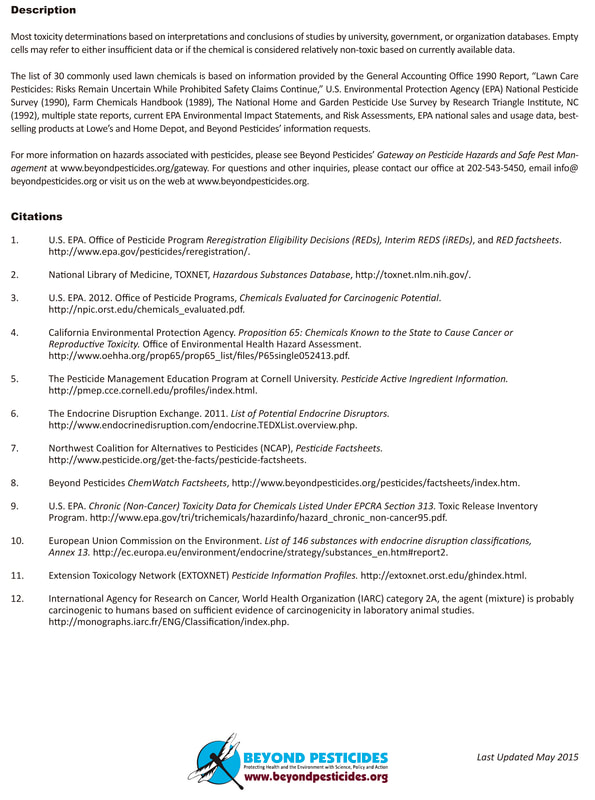
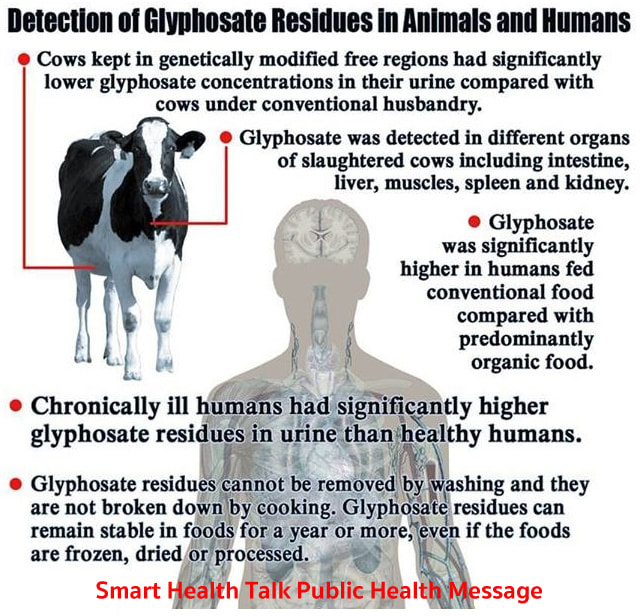


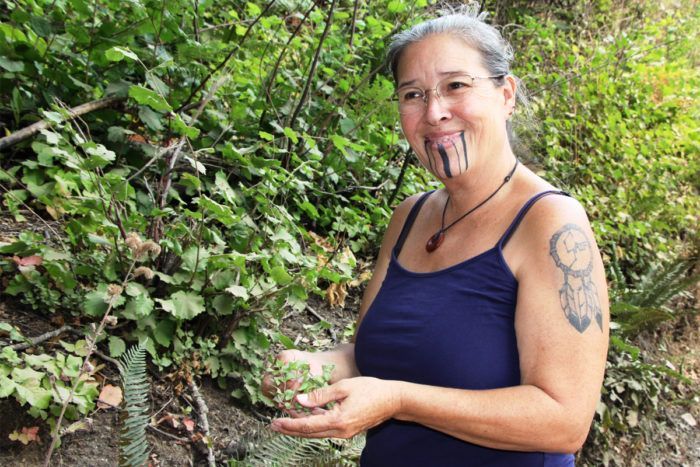



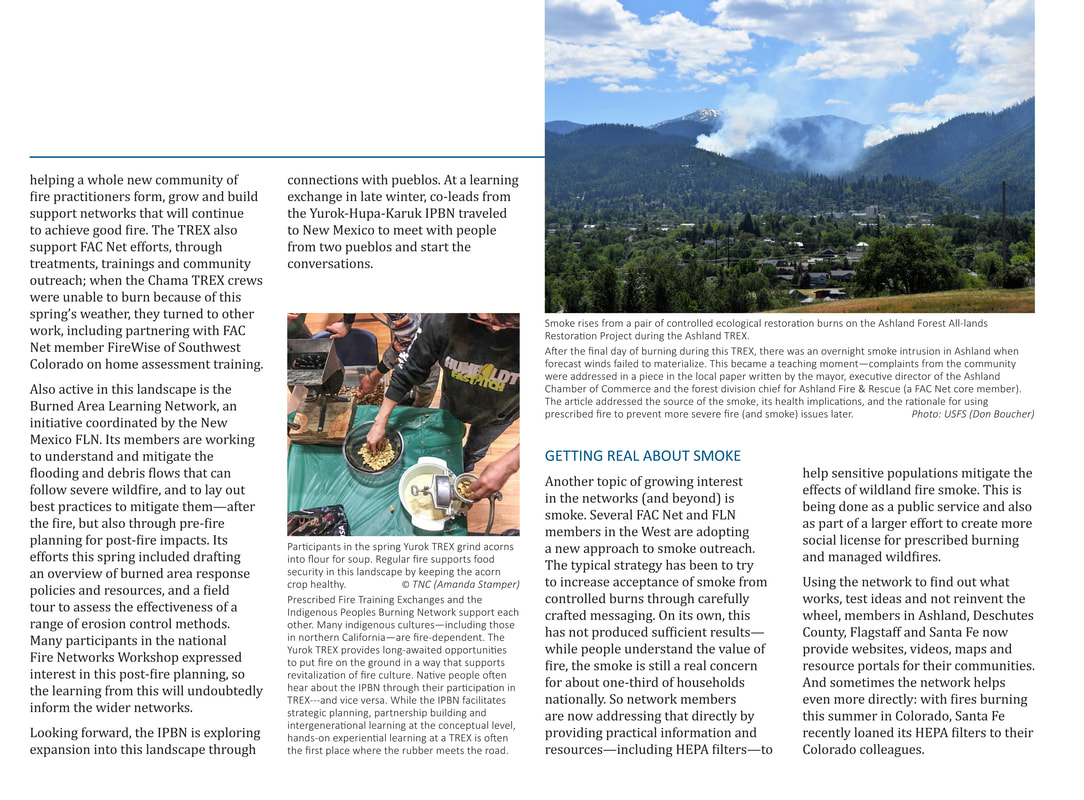










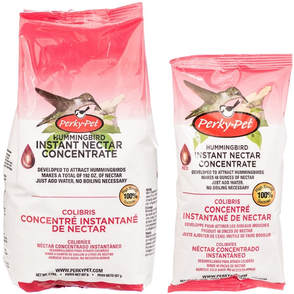














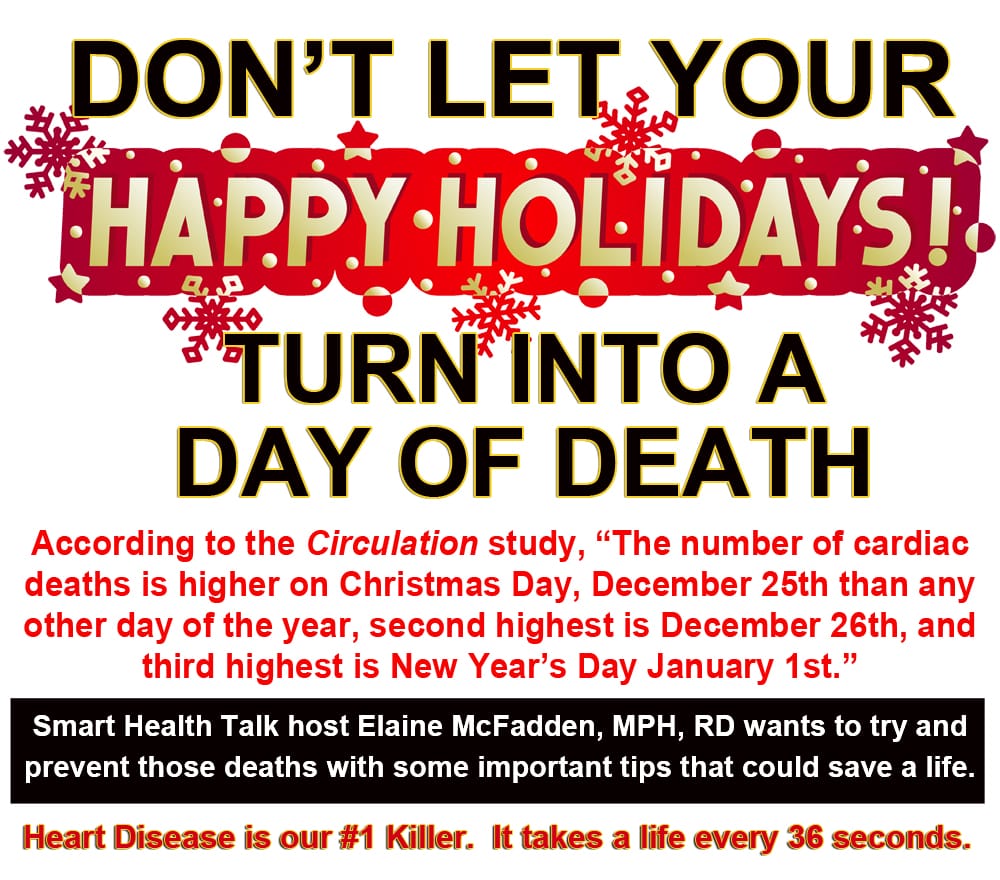










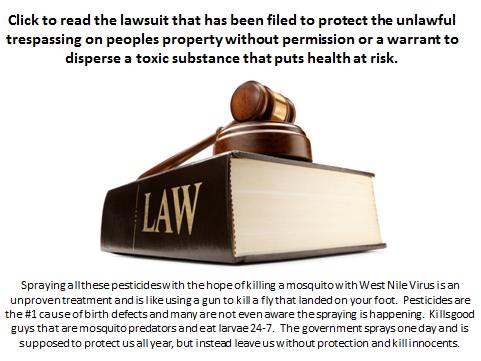
 RSS Feed
RSS Feed
